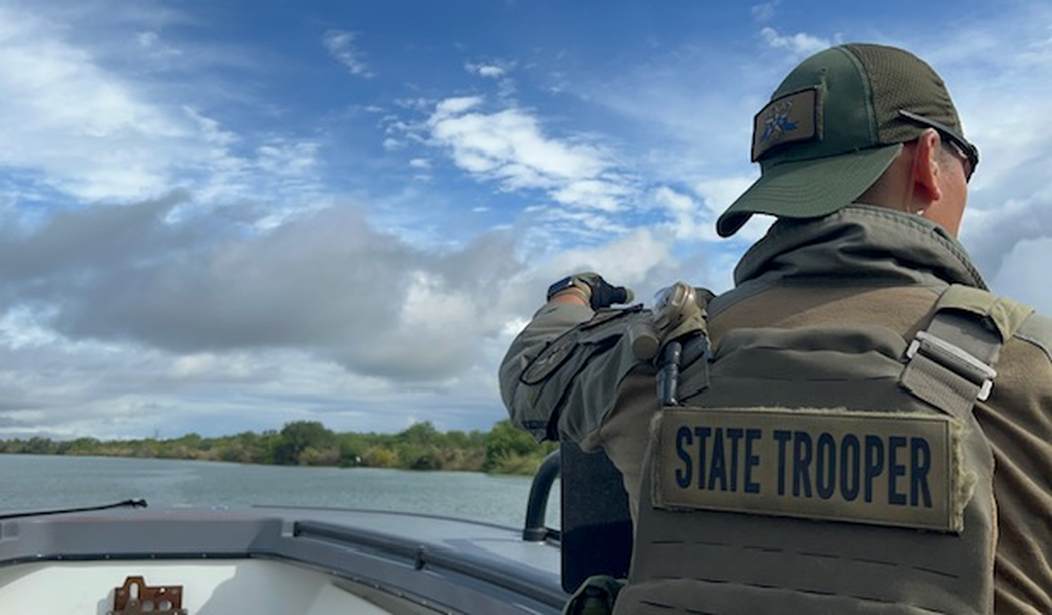“Congressman, please step back here because you are in the line of fire,” the border agent commanded. It was the mid-1990s and I was standing at the San Ysidro Port of Entry which connects Tijuana, Mexico, with San Diego. I was on a Congressional trip inspecting the border wall being constructed with bipartisan support from President Clinton and other Democrats.
The border patrol agent continued, “See those high rise buildings just down the road [in Mexico]? There are drug cartel sharpshooters in them monitoring the cars that are trying to get through the inspection area with drugs hidden in the cars. They use high power sights and sniper rifles to make sure the drivers don’t give away their cargoes.”
The border wall funnels illegal drug and immigrant traffic to the Port of Entry. More than 14 million vehicles and 23 million passengers annually pass through one of its 26 inspection lanes to get into the United States. The wall has helped—each year more than 80,000 kilograms of marijuana, methamphetamine and heroin are confiscated at this port of entry alone.
Border agents have about 40 seconds per car to find smuggling. The smuggling of fentanyl as compared to other illicit drugs with a larger bulk has made the job harder as the small physical size of the drug can be more easily hidden. Last year more than 100,000 Americans died of drug overdose mostly due to fentanyl, a synthetic opioid used for pain control. It is used in pure form, or mixed with other illicit drugs to increase potency, or is made to look exactly like prescription drugs such as Tylenol #3 and oxycontin. It is very addictive as it produces a high and feeling of euphoria. Drug overdose is now the leading cause of death in Americans aged 18-48.
The drug cartels have used tunnels and sea routes to try to get under or around the wall. It is a constant battle to maintain the wall’s integrity. That is why new x-ray devices that can monitor cars and semi-trucks at places like Laredo Texas are being installed. They can check semi-trucks without the driver getting out. Just recently a human mule was arrested at the Del Rio Post of Entry in Texas trying to smuggle into the U.S. more than forty pounds of fentanyl in her car.
Recommended
Laredo, Texas, is the second leading port of entry for interdicting illegal drugs. It is the gateway to the U.S. because Interstate 35 starts here and goes straight through Iowa to St. Paul. Most of the country can be reached from this port of entry within a day and a half drive.
The threat of drugs like fentanyl doesn’t just mean potential death for individuals but because of its potency would be an ideal weapon for terrorists. A few pounds of pure fentanyl mixed into a city’s water supply could kill thousands. Most fentanyl initially came into our country through marine ports from China hidden in the huge number of cargo containers coming to the U.S. Now China is supplying the components of fentanyl directly to the Mexican drug dealers who are flooding the United States with this very dangerous drug.
The border crisis with its huge numbers of illegal immigrants coming into our country mainly seeking jobs is intertwined with illegal drug smuggling. A record 1.7 million illegal immigrants were arrested at our national borders last year, a significant increase from previous years. About 700,000 were deported immediately under what is called Title 42, a law that gives the government authority to close the border to prevent Covid spread by largely unvaccinated immigrants.
The CDC is giving notice it is revoking this rule next month. The Department of Homeland Security estimates this will more than double the number of those needing to be processed and who will be released on their own recognizance to all parts of the country. This increases the numbers needing processing from about 8,000/month at present to as many as 18,000 per month. At current levels the Border Service is already overwhelmed in terms of facilities and manpower.
The drug cartels benefit from the immigrant surge in two main ways. About 90% of illegals cross the border using smugglers tied to the drug cartels. They pay these “coyotes” an average $4,000 per person. This provides the cartels with additional $ billions to run their drug operations. To handle the huge numbers of immigrants border personnel are shifted from drug interdiction to processing and caring for the immigrants. This makes it easier to get drugs through the border. The overwhelming numbers also makes it easier for criminal and gang members to get through the net.
The Biden administration rescinded the 2018 “remain in Mexico” policy allowing many more into our country. It is clear that immigrants believe that they will be treated more leniently under Biden than Trump. Word spreads quickly through smuggler’s networks that a policy has changed and now is the time to come. Weak border security, nonexistent interior enforcement (does anyone seriously think that giving these illegals “Biden phones” will increase them reporting to their hearings), and promises of “de facto” amnesty create incentives for the poor to flock to the U.S. Allowing unaccompanied children to apply for asylum in the U.S. has created an incentive for families in Central America to separate their families.
Total immigration reform is beyond the scope of this opinion piece but a sine qua non of comprehensive reform is border security. There are, however, some policy changes that could be done quickly to improve the situation on the border. “Remain in Mexico policy” was working and should be reinstituted. Children should be returned to their families in their home countries as quickly as possible. Gaps in the border wall under construction but stopped by President Biden’s executive order should be completed. Many are in areas of high traffic and videos document illegals streaming through the gaps. Even Democrats like U.S. Senator Maggie Hassan (NH) are coming out in favor of completing the border wall.
There is bipartisan support for continuing Title 42. Almost 50 Democrats members of the House and Senate do not want to end Title 42, including nine U.S. Democrat senators. Democrat Senators Raphael Warnock (GA) and Senator Mark Kelly (AZ) recently said, “This is the wrong decision [lifting the measure]. It’s unacceptable to end Title 42 without a plan and coordination in place to ensure a secure, orderly, and humane process at the border.” American public polling shows that 56% of the public want to continue pandemic border control, almost twice that for stopping Title 42.
If our country doesn’t get control of its southern border, the humanitarian crisis will get worse, more fentanyl will flow into the country killing hundreds of thousands, and the risk of a terrorist attack like 9/11 becomes more likely. Look for a border surge like we have never seen before when Title 42 ends.
John Greg Ganske is an American politician, plastic surgeon, and retired U.S. Army reserve lieutenant colonel who represented Iowa in the United States Congress from 1995-2002.

























Join the conversation as a VIP Member